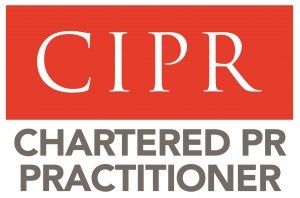News values are the criteria journalists use to assess the newsworthiness of a story. Understand them and you can be successful at gaining media coverage for your organisation. Here's one ex-journalist's guide
- Enhanced profile with a large number of people in your target audiences
- The credibility and reputational boost from being featured by an unbiased, independent source
- It removes a barrier to entry – people are less likely to invest in an unfamiliar brand
- It can increase your authority as a thought leader. This isn’t about sales – it's about you giving value as an expert in your sector
- You can educate about the issue for which your organisation has the solution
- Providing strong stories for journalists strengthens your relationship with the media
As a journalist you tend to gain an instinct for news values over time and your assessment of whether something is a good news story becomes more detailed, taking in a range or factors, including whether the evidence supporting it is too flimsy, or whether your audience will want to read/listen to/view a particular story at a particular time.
As a reporter for the Press Association news agency, I would file copy for the national media. A story I covered about a school in my region made the front page for one tabloid but was ignored by every other national outlet. This was because that tabloid’s news values included a particular focus on the issue I reported on.
So yes, an outlet will have its own criteria, and there's no substitute for doing your research and gaining a thorough understanding of the content an outlet uses. But listed below are some news values that many news desks will adhere to.
This is not an exhaustive list but understand these and refer to them when assessing content for a press release or news package for broadcasters, and you’re a step closer to becoming more successful at earning media coverage. You will also build a better relationship with those important journalists who are the gatekeepers between you and your audience.
Resonance: A journalist will often jump on a story they know will chime with their audience. As part a campaign for a mental health charity, I recently worked with an impressive guy who spoke openly about his issues during the pandemic. His story received media coverage widely and the huge amount of feedback he received from people with similar experiences showed why the media had it spot on.
Timeliness: If you offer a view, advice or other content that is topical, the likelihood is that it will be of interest to an audience because the issue will be on their mind at time of publication or broadcast. So think fresh information or advice about financial issues when the Government announces a budget, for example. Or advice to businesses about managing safety risks in workplaces post-lockdown in the week employers begin returning people to work.
Usefulness: If you provide really useful advice based on current circumstances, this will help a media outlet’s audience and so, in turn, make that outlet more valuable as a channel of information.
Newness: This is a little obvious, but it’s called ‘news’ for a reason. If you can give information that is genuinely fresh or reveals an unprecedented activity that is also interesting, you stand a chance of media coverage. The key word is 'interesting'. This is why organisations commission surveys – they give a brand new snapshot of behaviour or opinion in a particular field.
Emotive: Stories will often be published because they arouse strong feelings in the reader, listener or viewer. Often very human stories about people who are trying to overcome adversity receive coverage because of the emotions they provoke in the audience.
Authority of source: How much of an authority is the organisation sharing the story? Established, trusted brands carry more weight and this is why PR can be such an important part of business sustainability. As you build your reputation and credibility, you will be listened to more readily. At least, that's the theory.
Trendiness: It’s common for the media to look for trends and patterns. How many times have you spotted a story about a particular incident, and then follow-up stories of similar events happening elsewhere? Here, journalists are looking for the bigger story - i.e. the first instance wasn’t an isolated event but just the tip of the iceberg.
Quirkiness: And then there’s the story that’s so damn weird or different from anything you’ve heard before, that it’s interesting. This is a news value you may not be looking for if you’re trying to enhance your brand.
Attempting to secure media coverage can be a frustrating pursuit but the more you understand how the media make their decisions on what is newsy, the better chance you have of grabbing a brand-enhancing headline and reaching your target audience.
And just a final point: good journalists have a sensitive antenna for the business trying to plug a product or service through news channels. If you want to sell, pay for an advert. News is defined by what's interesting and valuable, for whatever reason, to the people receiving it. And you may just have a newsworthy story of your own to tell.
To find out more about how media relations can be an effective part of your marketing strategy, get in touch with us at Branagh PR.





